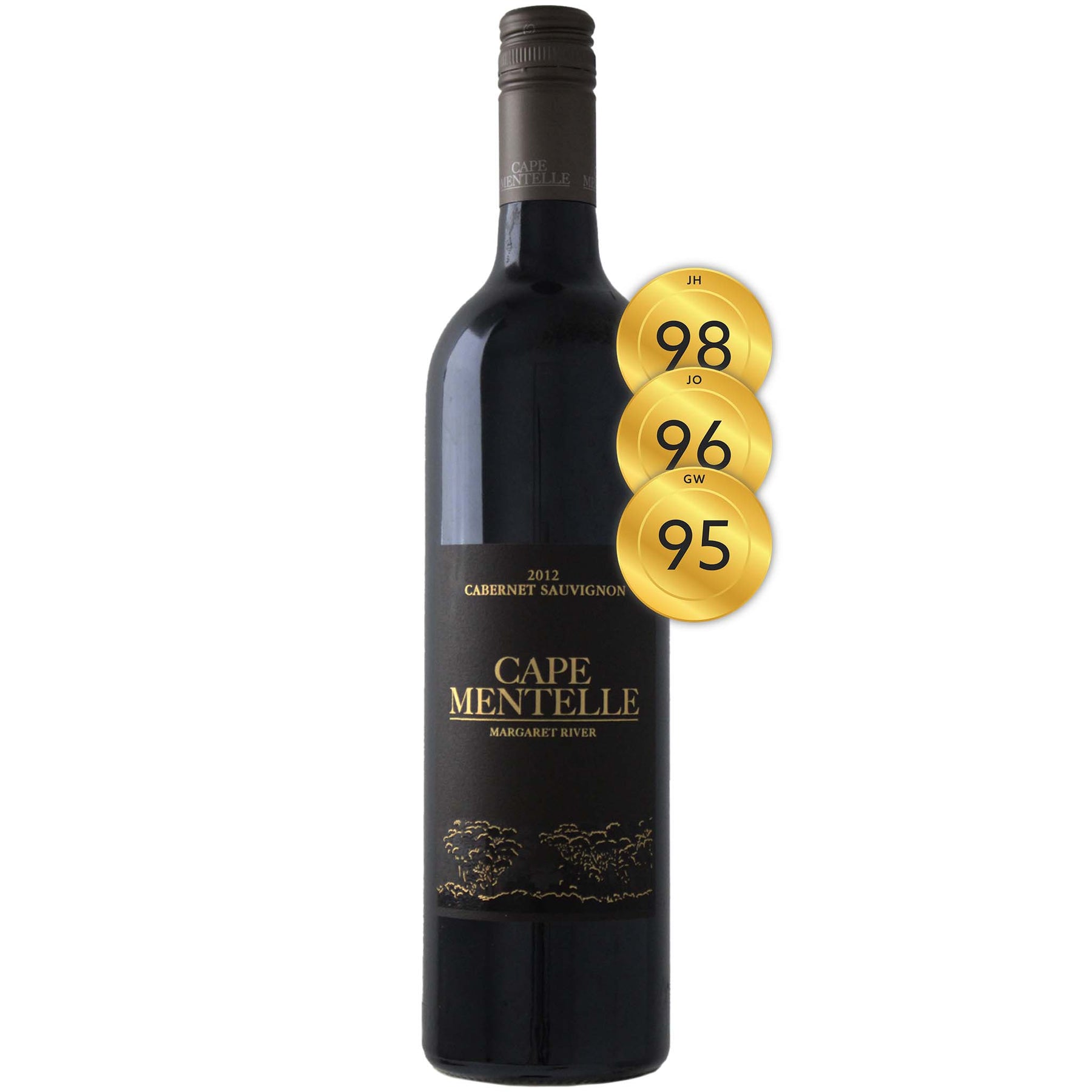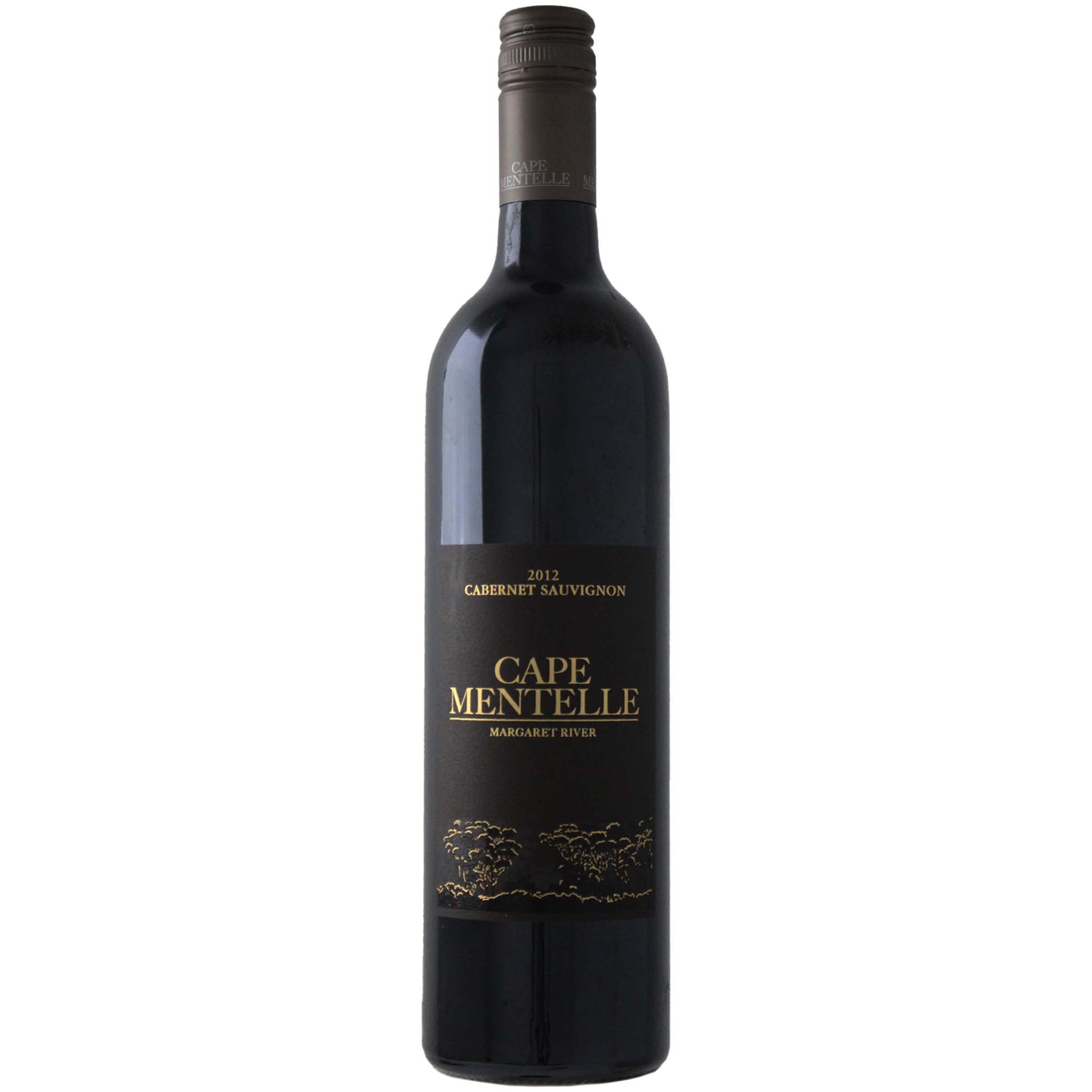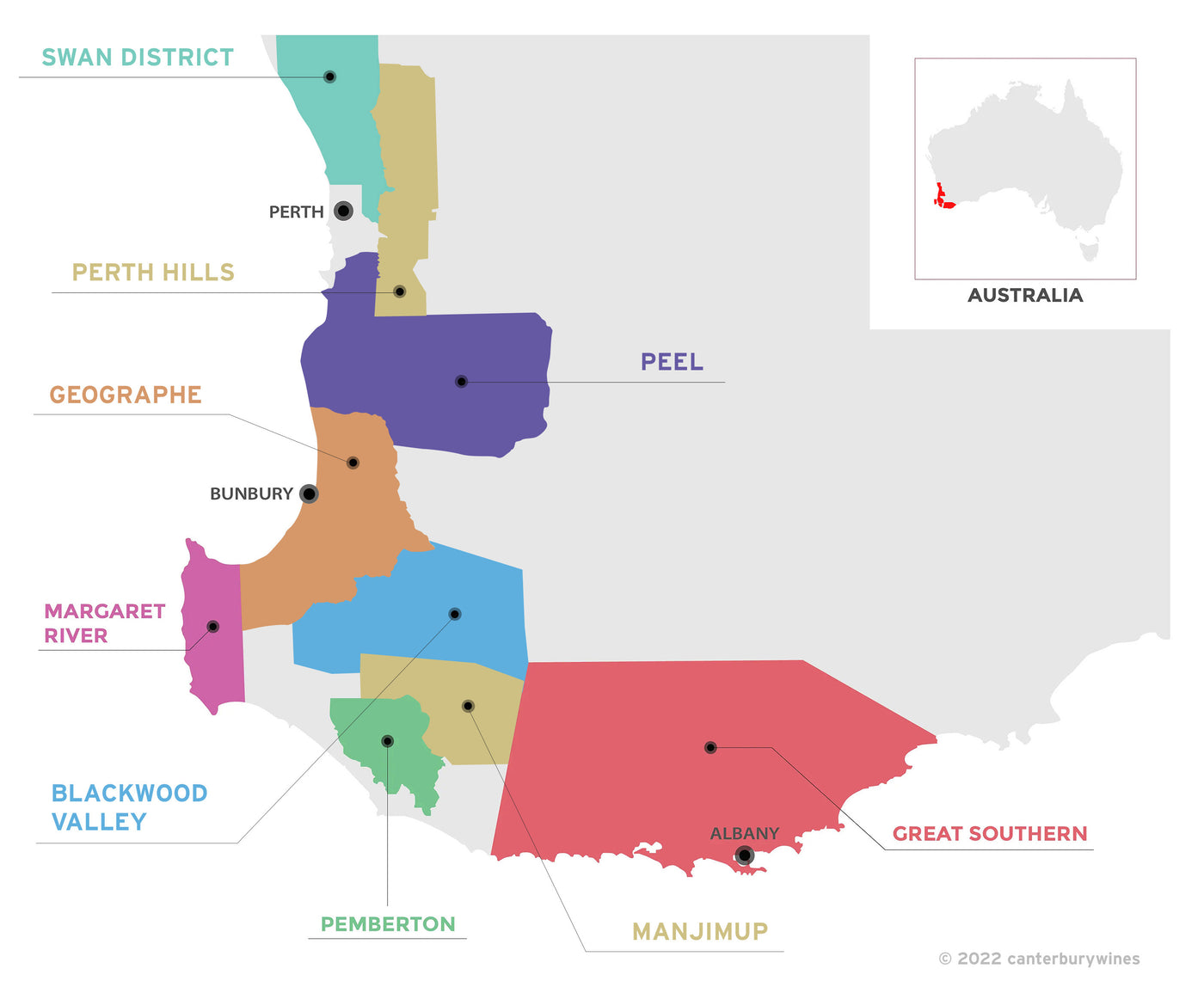

Cape Mentelle Cabernet Sauvignon 2012
Style: Red Wine
Closure: Screwcap
Cape Mentelle Cabernet Sauvignon 2012
Warehouse
34 Redland Drive
Vermont VIC 3133
Australia
Critic Score: 98
Alcohol: 14.0%
Size: 750 ml
Drink by: 2045
Wine industry pioneer David Hohnen established Cape Mentelle Vineyards in 1970. The 16ha Wallcliffe Vineyard was planted in the early 1970s and the winery's flagship Cabernet Sauvignon is sourced primarily from this Vineyard.
"This is a glorious cabernet, its blackcurrant, cedar and spice bouquet leading into a seamless, perfectly balanced palate with cassis and redcurrant fruit framed by cedary oak. The amazing tannins, softly woven into the fabric of the fruit, gives this wine its ultimate class." James Halliday
Expert reviews
"Handpicked fruit was berry sorted before fermentation of 30 days on skins; 18 months in French oak (50% new). This is a glorious cabernet, its blackcurrant, cedar and spice bouquet leading into a seamless, perfectly balanced palate with cassis and redcurrant fruit framed by cedary oak. The amazing tannins, softly woven into the fabric of the fruit, gives this wine its ultimate class. Very different to the 2011. Drink by 2052." James Halliday, Halliday Wine Companion - 98 points
"Very stylish, elegant and focused, with a wonderful core of fruit, this compelling cabernet has a deeply floral bouquet of violets, cassis and small red berries knit with cedar/chocolate/mocha oak and backed by nuances of graphite and dried herbs. It's long, smooth and polished, with intense, pristine small black and red berry flavoured tightly integrated with handsome new oak and fine, gravelly tannins, extending towards a long, tightly drilled and persistent finish of faint mineral and savoury qualities. Drink: 2032-2042." Jeremy Oliver - 96 points
"I’ll be nipping over to Margaret River in a month or so for a very quick trip. I’ve not visited since 2003. It’s probably my favourite Australian wine region – physically and for the wines it produces. The tyranny of distance, mostly. That and not being allowed out much… Nutty oak in support, dark fruit, chocolate, leaf and floral perfume. Medium bodied, but pretty dense this vintage – feels a little more serious – turning up the heft and ripeness just a little. It’s kind of glossy yet laden with tannin, mineral and grunt. Has length and impact, while maintain its typical well mannered charm. Feels very much like a long term release. Drink 2018-2032+" Gary Walsh, Winefront - 95 points
About the vineyards

Cape Mentelle has over 150 hectares of its own vines across four vineyards within the Margaret River region. Primary plantings are cabernet sauvignon, semillon and sauvignon blanc, with smaller amounts of shiraz, chardonnay, merlot, cabernet franc and zinfandel.
Wallcliffe Vineyard
Cape Mentelle's journey started in the early 1970s with planting of the 16ha Wallcliffe Vineyard. Varieties planted at Wallcliffe are sauvignon blanc, semillon, cabernet sauvignon, cabernet franc, zinfandel and shiraz, and these vines have provided source material for new blocks as the vineyard has expanded. The winery's flagship Cabernet Sauvignon is sourced primarily from the original Wallcliffe Vineyard. The three cabernet sauvignon blocks are cane pruned. Row spacing is mostly 3m, with 1.5 to 1.8m vine spacing with predominantly vertical shoot positioning trellising.
Trinders Vineyard
Evolving from the success of the Wallcliffe Vineyard, Trinders was developed on the eastern side of the Estate entry road in 1988 when Cape Mentelle purchased the 23ha site. Plantings are of semillon, sauvignon blanc, cabernet sauvignon, cabernet franc, merlot and shiraz. This block has been the testing ground for many early 'alternative' methods, including making and incorporating compost for vine nutrition, undervine weeding and minimal chemical use for pest and disease control. Numerous trellis systems have been tried in the past. Vertical shoot positioning is now used in most of the vineyard to facilitate ripening by keeping the canopies upright and ensuring even sun exposure.
Chapman Brook Vineyard
Chapman Brook boasts some of the best growing sites in the region. The undulating slopes help to create wines of uncompromised freshness. The 40ha Chapman Brook Vineyard is located 20 km southeast of the Margaret River township with a predominantly easterly aspect and some southeast and northeast slopes. Varying depths of sandy loam topsoil overlie ironstone gravel with varying degrees of heavy clay subsoil. This vineyard was planted in the early 1990s, mostly to white varieties - sauvignon blanc, semillon, chardonnay and viognier. The GinGin chardonnay clone is planted here along with some newer clones (5, 76 and 95) of the main varieties. Vertical shoot positioning is used throughout this challenging vineyard with 2m vine spacing and row spacing and unilateral cordons.
Crossroads Vineyard
Crossroads Vineyard is the youngest site, but also one of the strongest performers. Planted in 2003, its ancient lateritic soils are home to sauvignon blanc, semillon, and chardonnay, as well as shiraz and small amounts of petit verdot, zinfandel and grenache.
About the winery

David Hohnen
Wine industry pioneer David Hohnen and his brothers Mark and Giles established Cape Mentelle Vineyards in 1970. The winery takes its name from the nearby Cape, named after two notable French scientists, geographer Edmund Mentelle and his cartographer brother Francois-Simon, who charted the coast of Western Australia in 1801.
Cape Mentelle's journey started in the early 1970s with the planting of the 16ha Wallcliffe Vineyard. Varieties planted at Wallcliffe are sauvignon blanc, semillon, cabernet sauvignon, cabernet franc, zinfandel and shiraz, and these vines have provided source material for new blocks as the vineyard has expanded. The winery's flagship Cabernet Sauvignon is sourced primarily from the original Wallcliffe Vineyard.
In 1983 Cape Mentelle won the coveted Jimmy Watson Memorial Award for the best one-year-old dry red wine, and cemented its position as a premium winery with another win in 1984. Their Cabernet Sauvignon is widely regarded as one of Australia's leading cabernets.
Another wine to become a core part of the winery's portfolio was the distinctive Zinfandel. David Hohnen had studied wine at Fresno State University in California and was captivated by this robust variety. The 1972 plantings at Cape Mentelle were one of the first commercial vineyards of the variety in Western Australia.
The area under vine increased with the establishment of the 23ha Trinders Vineyard in 1988, followed by the Chapman Brook Vineyard in the early 1990s. By this time Cape Mentelle had a well-established reputation in the Australian market.
Today, Cape Mentelle is part of Paragon Wine Estates owned by Endeavour Group Limited.

Western Australia
Western Australia is home to more than 400 wineries across nine vast and extraordinary wine regions which are almost entirely concentrated in the south-west and great southern land divisions of the State. The regions are Blackwood Valley, Geographe, Great Southern, Peel, Pemberton, Manjimup, Margaret River and Swan District.
The oldest region is the Swan Valley, the best known both nationally and internationally is Margaret River and the largest is Great Southern. The Great Southern region is further divided into the five subregions of Albany, Denmark, Frankland River, Mount Barker and Porongurup.
The history of wine production in Western Australia dates back to 1840 with the establishment of Sandalford in the Swan Valley region. The recognition of the fine wine possibilities started to be realised after the establishment of the Margaret River Region in 1967, which has become renowned for its high quality Chardonnay and Cabernet Sauvignon. The other regions produce a diverse range of regionally distinct wines, from stunning Rieslings and evocative Shiraz, to a range of unique Cabernet Sauvignon blends.

